 W
WAshfield in Torquay was the childhood home of Agatha Christie. She lived there from her birth until the time of her marriage, and intermittently thereafter. She reluctantly sold it in 1940; in 1962 it was demolished and replaced with a small estate of houses. A blue plaque marks the top left corner of the two-acre property which was Ashfield. Christie loved this house, and even in old age remembered it fondly. In her autobiography, she stated: I remember, I remember the house where I was born. I go back to that always in my mind. Ashfield. How much that means. When I dream I hardly ever dream of Greenway or Winterbrook. It is always Ashfield, the old familiar setting where one’s life first functioned… How well I know every detail there: the frayed red curtain leading to the kitchen, the sunflower brass fender in the hall grate, the Turkey carpet on the stairs, the big shabby schoolroom with its dark blue and gold embossed wallpaper.
 W
WThe Bauakademie in Berlin, Germany, was a higher education school for the art of building to train master builders. It originated from the construction department of the Academy of Fine Arts and Mechanical Sciences, which emphasized the aesthetic elements of art of building while ignoring the technical. Thus, the governmental Upper Building Department ("UBD") decided to establish an entirely new building educational institution named "Bauakademie". It was founded on 18 March 1799 by King Frederick William III and, in 1801, incorporated into the UBD, as its section.
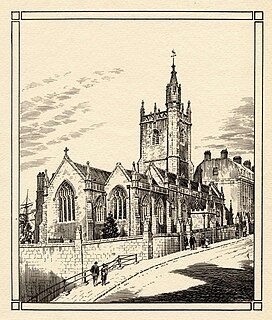 W
WSt Augustine the Less was a Church of England parish church in Bristol, England, first attested in 1240, rebuilt in 1480, damaged in 1940 by fire, and demolished in 1962. It took its name from its proximity to the church of the Abbey of St Augustine, which is now Bristol Cathedral.
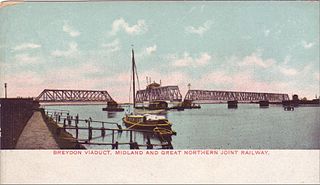 W
WBreydon Viaduct was a railway bridge across the River Yare near Great Yarmouth, Norfolk, England that was built by the Midland and Great Northern Joint Railway (M&GN).
 W
WThe London Coal Exchange was situated on the north side of Thames Street in the City of London, nearly opposite to Old Billingsgate Market, occupying three different structures from 1770 to 1962. The original coal exchange opened in 1770. A second building from 1805 was replaced by a new purpose-built structure constructed from 1847 to 1849, and opened by Prince Albert on 30 October 1849. This third London coal exchange was one of the first substantial buildings constructed from cast iron, built several years before the hall at the Great Exhibition. It was demolished in 1962 to allow widening of what is now Lower Thames Street despite a campaign by the Victorian Society to save the building. Cast iron decorations from the 1849 Coal Exchange building were selected as the model for the dragon boundary mark for the main entrances to the City of London.
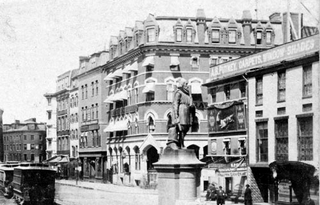 W
WThe Crawford House was a hotel and restaurant in downtown Boston, Massachusetts. Located on Court and Brattle Streets in Scollay Square, it was in operation during the late nineteenth and early twentieth centuries, and was for a time among the leading hotels in the city. The building was demolished in 1962 as part of the Government Center project.
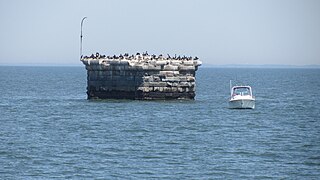 W
WThe Cross Ledge Light was a lighthouse on the north side of the ship channel in Delaware Bay off of Cumberland County, New Jersey on the East Coast of the United States, southwest of Egg Island Point. It was replaced by the Elbow of Cross Ledge Light and the Miah Maull Shoal Light in the early 1900s and razed by the United States Coast Guard in 1962.
 W
WHempsted Court was a country house at Hempsted near Gloucester in England. It was the home of the Lysons family. It was demolished in 1962 and replaced by a housing estate.
 W
WThe Hollenden Hotel was a luxury hotel in downtown Cleveland, Ohio. It opened in 1885, was significantly upgraded in 1926 and demolished in 1962. During the hotel's existence, it contained 1,000 rooms, 100 private baths, a lavish interior, electric lights and fireproof construction. As Cleveland's most glamorous hotel of the time, it hosted industrialists, celebrities and politicians, including five U.S. Presidents. The Fifth Third Center skyscraper currently occupies the hotel's former location.
 W
WThe Howard Athenæum (1845-1953), also known as Old Howard Theatre, in Boston, Massachusetts, was one of the most famous theaters in Boston history. Founded in 1845, it remained an institution of culture and learning for most of its years, finally closing in 1953. It was demolished in 1962 after a fire in June 1961.
 W
WThe Jubilee Exhibition Building in Adelaide, South Australia, was built to celebrate the 50th anniversary of Queen Victoria's accession to the throne on 20 June 1837. The jubilees of her Coronation on 28 June 1838, and of the Proclamation of South Australia on 28 December 1836, were also invoked on occasion.
 W
WThe William G. Low House was a seaside cottage at 3 Low Lane in Bristol, Rhode Island.
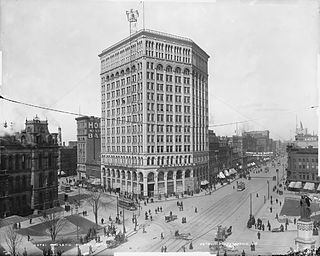 W
WThe Majestic Building was a high-rise building located at 1001 Woodward Avenue in Downtown Detroit, Michigan. The building was constructed in 1896 for the Mabley and Company department store chain and was the city's second skyscraper, following the completion of the Hammond Building. It contained 14 stories and stood at 68 m (223 ft) in height. This building was designed in the Beaux-Arts style by Daniel H. Burnham & Company, and faced with terra cotta. The final construction cost of the building was $1,000,000. This was Detroit's tallest building, from its completion in 1896 until 1909, when it was overtaken by the Ford Building. Unfortunately, C. R. Mabley died before the building's completion and new owners used it solely as an office block. It was purportedly renamed the Majestic building to conform with the letter "M" carved in numerous places in its façade.
 W
WMemorial Hall served as both the town hall of Dedham, Massachusetts from 1868 until 1962 and as the Town's monument to the soldiers from the town who died in the Civil War.
 W
WThe Old Plantation Flats Light was a lighthouse located in the Chesapeake Bay marking the channel to Cape Charles, Virginia.
 W
WThe Pavilion Theatre at 191–193 Whitechapel Road, London, was the first major theatre to open in London's East End. It was destroyed by fire in 1856 and rebuilt as the New Royal Pavilion Theatre, which operated until 1935.
 W
WSt Swithin, London Stone, was an Anglican Church in the City of London. It stood on the north side of Cannon Street, between Salters' Hall Court and St Swithin's Lane, which runs north from Cannon Street to King William Street and takes its name from the church. Of medieval origin, it was destroyed by the Great Fire of London, and rebuilt to the designs of Sir Christopher Wren. It was badly damaged by bombing during the Second World War, and the remains were demolished in 1962.
 W
WThe Southport Winter Gardens was a Victorian entertainment complex in the town of Southport, Merseyside. The original winter gardens comprised a theatre, opera house, aquarium, a small zoo, conservatory, promenades and halls situated under the grand glass domes.
 W
WStalin's Monument was a 15.5 m (51 ft) granite statue honoring Joseph Stalin in Prague, Czechoslovakia. It was unveiled on 1 May 1955 after more than 5+1⁄2 years of work, and was the world's largest representation of Stalin. The sculpture was demolished in late 1962.
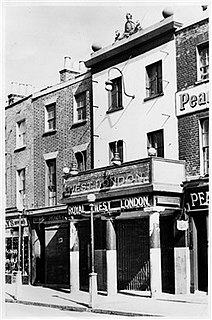 W
WThe Theatre Royal, Marylebone was a Victorian era theatre in the Marylebone area of London. Built in 1831, at various other times it was a music hall, a cinema and warehouse until it was damaged by fire in 1962, when it was demolished.
 W
WWetherby Grange was a stately home in the Micklethwaite area of Wetherby, West Yorkshire. It was demolished in 1962.